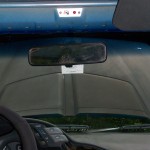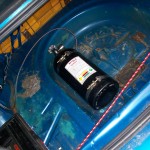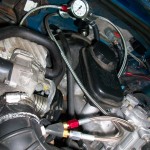Nitrous is a great addition to a daily driver in my opinion for a few reasons. It doesn’t have to be permanent and can be moved to another vehicle later, it doesn’t require any major hardware changes if used in smaller doses, you don’t have to use it constantly so your car gets as good of gas mileage and driveability as it did before, it’s pretty easy to install, and it’s a lot of horsepower for not a lot of money. There are a few caveats to consider too, though. Nitrous seems to have a bad stigma, that you will blow up your engine if you use it. This is true if you don’t follow the rules and inject more than is recommended and don’t use any safeguards like a fuel pressure safety switch, rpm window switch, trans cooler, or optionally even an air fuel cutoff switch. The reality is, if you do all of these things and maintain your car well, you should get plenty of trouble free operation from it. Sure, when you add stress things will wear out a little more quickly, but only you can decide if you want the tradeoff. Nitrous or not, your engine will eventually wear out. The only immediate drawback is running out and having to get the bottle filled.
The false minimum of items you need for installation are a switch, the bottle and brackets, lines, nozzle and jets, and solenoids. Once that went horribly wrong, the real minimum items in my opinion are all of the above items plus a fuel pressure safety switch, wide open throttle switch, rpm window switch, nitrous pressure gauge, fuel pressure gauge, a decent scale, and knowledge about your factory horsepower and fuel pump (and probably injectors too if you decided to go the dry route.) These all make sure you’re not injecting when you shouldn’t be, or too much. The scale is for when you get tired of guessing how much you have left in your tank, because the pressure gauge does not give you any indication of that, only the weight of the bottle does.
On to a few install details! I picked up the kit used, so I had to get a few things before I could get started. These included a Summit RPM window switch, fuel pressure gauge, a couple AN fittings to attach the gauge and solenoids, an LED indicator for when the system is armed, some wire, and hardware to mount the bottle bracket. It’s pretty straight forward, I ran the nitrous line through the interior and out the firewall, and mounted the solenoids in the engine bay on the firewall, close enough so the short lines could reach from them to the nozzle. The wiring was the only involved part that required a little planning since there is some wiring to hook up to operate the window switch, and then the inline relay, wide open throttle switch, arming switch, and fuel pressure safety switches. A bottle fill, setting the fuel pressure and rpm limits, and it was spraying in no time! I later added a blow down tube to make the setup dragway legal.





sounds tricky! you make some good points, but i still don’t like nitrous…
It’s not so tricky. I think you should get back to me after you’ve tried it! 🙂